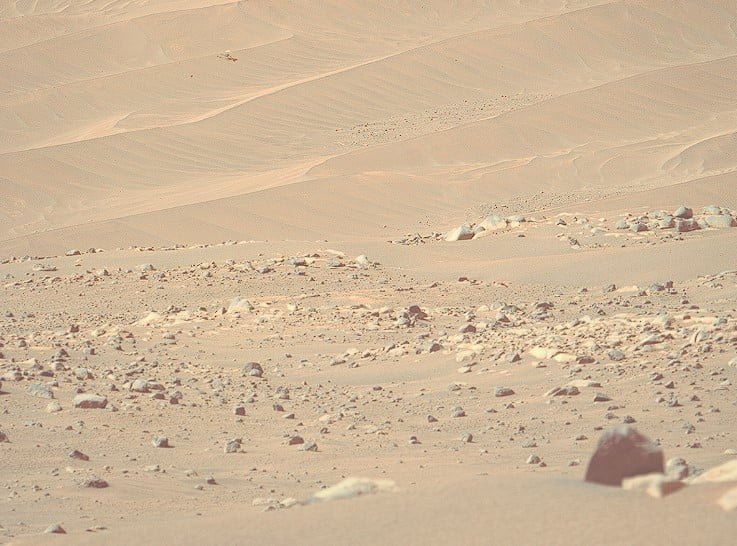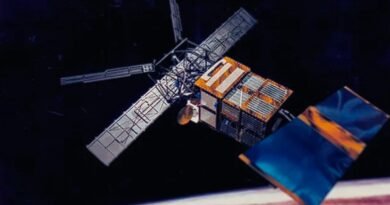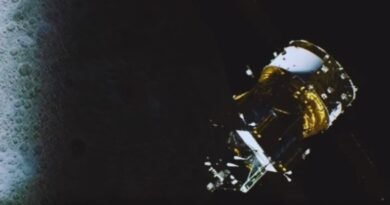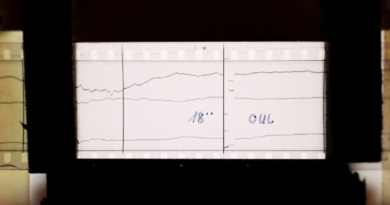Perseverance Rover Locates NASA’s Ingenuity Mars Helicopter Stranded on Martian Dune

NASA’s Perseverance Rover captured a poignant image of its ailing counterpart, the Ingenuity helicopter, resting on a Martian dune, alone and motionless.
In the latest snapshot of Ingenuity, the dual-rotor ‘copter is seen perched on a sandy dune against a backdrop of Mars’ barren, rocky terrain. The photo, taken on Feb. 4, 2024, at 1:05 p.m. local mean solar time, marks over two weeks since the helicopter suffered mission-ending damage.
During a flight on Jan. 18, Ingenuity sustained rotor damage while landing on a featureless patch of sandy Martian landscape, devoid of visual cues. Typically, the helicopter relies on landscape features like rocks for navigation, but the absence of such cues led to the mishap.
The Jet Propulsion Laboratory (JPL) is assessing the extent of damage to Ingenuity’s blades. However, irrespective of the findings, the helicopter’s flight mission has concluded.
Ingenuity arrived on Mars alongside its companion, the Perseverance rover, on Feb. 18, 2021. In April 2021, it made history by executing the first flight of a powered aircraft on another planet.
Operating as a scout for Perseverance, Ingenuity aided in identifying areas of interest within the Jezero Crater, revealing signs of ancient water bodies that might have once supported life.
In light of Ingenuity’s pioneering mission, NASA and JPL leaders have commended the teams behind the helicopter. Teddy Tzanetos, Ingenuity Project Manager at JPL, expressed pride and gratitude for the project’s success during a recent tribute, acknowledging the dedication of the entire team.
Tiffany Morgan, NASA’s Mars Exploration Program Deputy Director, highlighted Ingenuity’s legacy as a trailblazer for future aerial exploration missions on other celestial bodies. She emphasized the significance of the innovative approach demonstrated by the NASA JPL team, which could shape future planetary exploration endeavors.
NASA is developing the nuclear-powered Dragonfly also, a drone slated to explore Saturn’s largest moon, Titan. Expected to launch no earlier than 2028, Dragonfly represents the next chapter in NASA’s quest to explore distant worlds.








